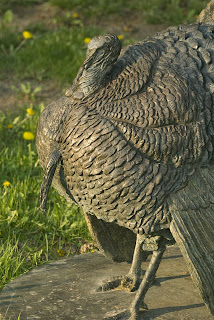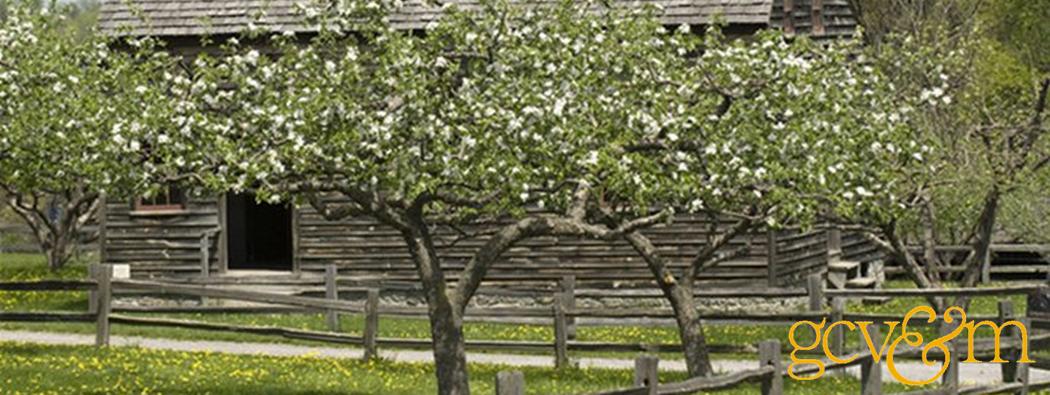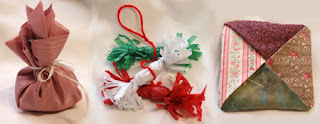Today's post is a guest post by Charles LeCount, Senior Director of Programs and Collections at the Genesee Country Village & Museum
19th-Century Origins of Our Modern Day Thanksgiving
The story, or myth (depending upon who you talk to) of the First Thanksgiving is well know to most. And many of us are aware that other locations than Plymouth, Massachusetts have valid claims to actually hosting the first “thanksgiving” in North America. However, once we get beyond the “origination” stories, few of us are familiar with how the holiday actually gained accepted into the pantheon of American holidays. And many of us are unaware that much of the "customization" of the holiday into the celebration that we know today, took place in the 19th century.
America in the early 19th century was a country with little history and virtually no shared customs. Divisions were everywhere. Americans saw themselves first as a Virginian or a New Yorker, or as a New Englander, Westerner or Southerner before they considered themselves American. The country was full of immigrants from Ireland, Germany and England. Foreign languages, accents and strange regional and ethnic customs localized Americans. Americans were divided by politics. Democrats favored little government; whereas the more conservative Whigs wanted more. They were divided over the questions of slavery, western expansion and the place of religion in the community and in government. Politically, the states guarded their rights and powers jealously. So inherently localized were Americans that most referred to the country in the plural sense, as in “these United States” as opposed to “the United States”.
The infancy and parochial nature of early 19th century America was also reflected in the fact that the country had few common holidays: civic, cultural or religious. Aside from Independence Day (July 4th) and Washington’s Birthday (February 22), there were no civic holidays universally regarded or celebrated among Americans. And arguably these days were not celebrated by the country’s many enslaved African Americans or its Indian inhabitants. And while the country had already engaged in several wars, no Memorial Day or Veterans Day yet existed. And there was no Labor Day or Martin Luther King Day either.
New Years Day was recognized by many people but it was hardly celebrated as we think of it today. Folk cultural holidays abounded among the nation’s many ethnic groups but most had limited appeal. How many of us still celebrate Guy Fawkes Day or Fast Day for example though they had their followings in early America? And forget about Halloween. While originally a pagan observance taken over by the Catholic Church it’s a largely a modern holiday with few roots in early America.
Religious based holidays in early 19th century America were even more rare. As the United States was a largely Protestant nation, the many Catholic saints or holy days (including Easter) were ignored by the masses. To Protestant Americans, who believed the word of the Bible, only Sunday—the Sabbath, need be observed. Thus, while Christmas was recognized by some Americans, those who did observe it mostly celebrated the day through a potpourri of secular or folk customs. In fact Christmas was often a rowdy, street festival in many cities.
Many Americans were happy with this. Government pretty much stayed out of the holiday making business and no governmentally supported church mandated observances. True, Presidents Washington, Adams and Madison (Jefferson did not) declared days of Thanksgiving during their presidencies. But the days differed from year to year and were not declared annually.
Other Americans lamented the country’s lack of unifying holidays. They felt the nation needed holidays that were morally edifying as opposed to rowdy public festivals that often got out of hand. They wanted holidays that would focus on the family and home. Sarah Hale, the New England-bred editor of Gody’s, was a tireless promoter of Thanksgiving as a holiday to satisfy this need. For her, the holiday would promote a happy, loving Christian oasis at home: “…when the noise and tumult of worldliness may be exchanged for the laughter of happy children, the glad greetings of family reunion, and the humble gratitude of Christian heart.” Hale observed that America had only “two national holidays, Washington’s birthday, and Independence day” and that they were set by circumstances in mid-summer and mid-winter. What the country needed was a “third festival, hallowed by custom or by statue, for autumn….” She recommended the last Thursday of November as a day “best suited when the people…might sit down together…and enjoy in national union their feast of gladness, rendering thanks to Almighty God for the blessings of the year.” She didn’t mention honoring the Pilgrims.
Despite Hale’s and others efforts, early political attempts to make Thanksgiving a national holiday failed. In a country deeply divided by regional and political interests, Thanksgiving was too “Yankee”, too New England to be accepted by others outside the tiny region. A Pennsylvania newspaper editor ridiculed Thanksgiving as “Yankee importations which had no real reason for existing on Pennsylvania soil.” For many, the holiday smacked of Puritanism and for others it illustrated the self-importance of New Englanders and their political power. If Congress declared what had heretofore been a regional holiday a national one, what next?
Declaring what seemed to be a religious observance a national holiday also struck many as unconstitutional. A South Carolina congressman objected to making Thanksgiving a national holiday as it was a “religious matter” and not “the business of Congress.” Even some New Englanders were uncomfortable with the government getting involved. “The appointment…of a thanksgiving by a civil officer, is strictly a union of Church and State,” wrote abolitionist William Lloyd Garrison in 1835.
 | |
| One of GCV's Bronze Sculptures |
Some folks discomfort with elevating the holiday to national levels for morality’s sake stemmed from the primary mode of celebrating the day—eating. For a day that was supposed to promote praise and thanksgiving to the Almighty to be spent on gluttony was bothersome. Ironically though, the focus on eating probably made the acceptance of the holiday more acceptable to those outside of New England.
Our own New York was one of the leaders in recognizing Thanksgiving governmentally. The governor of New York in 1817 declared it a holiday and in 1830 the state sanctioned it officially. By the 1840s many northern states had declared thanksgiving holidays of their own. Texas was the first Southern state to declare Thanksgiving a holiday in 1848. By the Civil War five southern states, and most northern states and all the western territories had done so.
Charles Francis Adams, the grandson of President John Adams, wrote that the holiday was “gradually making its way as a festival into States which have but a very small infusion of the Puritans, and setting up a sort of independent existence against its more ancient form.”
Of course it would have to wait till 1863 for President Abraham Lincoln to set the holiday on the fourth Thursday of November each year and to make it a national holiday.







